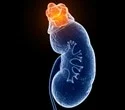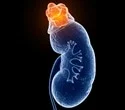
Higher levels of specific biomarkers in urine and blood can predict a patient’s risk of developing chronic kidney disease, according to a new study from Johns Hopkins Medicine that examined the long-term effects of hospitalized patients with acute kidney injury (AKI), a sudden but temporary loss of kidney function (CKD).
The research, which was released on March 23 in the Journal of Clinical Investigation, may aid medical professionals in determining whether a patient’s body is recovering appropriately after suffering kidney damage and may even help to stop the progression of AKI to CKD.
The kidneys are two bean-shaped organs that help your body flush out waste and clean your blood. When your kidneys cease functioning properly, AKI can result, which can lead to waste building up.
The United States Centers for Disease Control and Prevention estimate that 37 million Americans have CKD, making it the eighth most common cause of mortality in the nation.
Seven urine and two plasma indicators of kidney injury, inflammation, and tubular health were evaluated in a sample of 656 hospitalized AKI patients over the course of a year following diagnosis. The objective was to ascertain the relationships between long-term alterations in these biomarkers and the development of renal disease following AKI. The researchers discovered that for each deviation rise in the biomarker KIM-1’s change from baseline to 12 months, MCP-1 in urine and TNFRI in plasma was linked to a two- to three-fold greater risk for.
Parikh says these findings suggest that sustained tissue injury and inflammation, as well as slower restoration of tubular health, are associated with higher risk of kidney disease progression. However, they also observed that the increase in the urine biomarker UMOD was associated with a 40% reduced risk for CKD.
“Longitudinal measurement of some of these proteins have the potential to guide management of patients with AKI after discharge, which includes follow-up with a nephrologist; optimizing diabetes and cardiac medications; and accurate dosing of all medications with reduced kidney function,” says Parikh. He underscores the need for more research into these ongoing biological processes to help better understand the transition from AKI to CKD.
Additional researchers on this study include Yumeng Wen and Heather Thiessen-Philbrook, of Johns Hopkins University School of Medicine; Leyuan Xu, Isabel Melchinger, Dennis Moledina and Lloyd Cantley, of Yale School of Medicine; Steven Coca, of Icahn School of Medicine at Mount Sinai Hospital; Chi-yuan Hsu and Kathleen Liu, of the University of California, San Francisco; Alan Go, of Kaiser Permanente; Eddie Siew and T. Alp Ikizler, of Vanderbilt University; Vernon Chinchilli, of Pennsylvania State University College of Medicine; James Kaufman, of New York University School of Medicine; Paul Kimmel, of the National Institutes of Health; and Jonathan Himmelfarb, of the University School of Washington.






